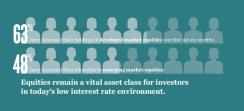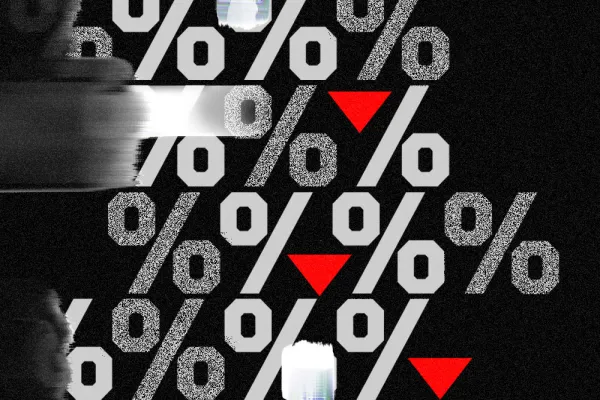SATISFIED WITH YOUR SAFETY NET?
State Street Global Advisors surveyed 420 global institutional investors to explore their attitudes toward equity market risk and examine the downside protection strategies they are using to manage their portfolios for volatility. Learn what your colleagues are saying about the state of volatility today -- and what it could mean for your portfolio.
One thing that CIOs agree on? Asset allocation alone may not be the optimal answer. Learn what your colleagues are saying about the state of volatility today – and what it could mean for your portfolio
Click here to download the full report.
In today’s low interest rate environment, equities remain a vital asset class for investors.
Investors in this survey say they are increasing their exposure to equities. Almost two-thirds (63%) have increased their holdings of developed market equities over the last six months and nearly half (48%) have increased their allocation to emerging market equities.
Investors feel obliged to hold equities, yet many feel more exposed to equity risk than they would like.
Despite increasing their exposure to equities, the majority of investors believe that both developed and emerging equity markets will see a correction within the next 12 months. More than half (53%) would like to reduce their allocations to equities, but do not feel that there is an attractive alternative given low yields in other asset classes.
Investors are highly confident that they can cope with market drawdowns.
A remarkable nine-out-of-ten say they are confident in their portfolio’s ability to weather a major market correction, with two-fifths (41%) making no change to their downside protection despite recent volatility. For some, this may be a sign of overconfidence in their ability to use a drawdown to their advantage. Many will have been rewarded in recent years for “buying the dip” - purchasing equities when prices were low but about to recover - and may believe their portfolios will perform well despite future volatility.
At present, investors largely rely on a small number of downside protection strategies.
More than four-in-five (84%) have implemented downside protection strategies of some kind, with 53% choosing dynamic asset allocation. At the same time, almost two-thirds (65%) believe their portfolio is suitably diversified to withstand drawdown. The same proportion (65%) of investors believes that diversification alone is enough to protect their portfolios. This faith in a relatively limited range of strategies could be taken as another sign of overconfidence. It may also suggest that investors are unaware of the true concentration of equity risk in their portfolios. While dynamic asset allocation and diversification have their place, a more reliable approach would rely on multiple lines of defense.
Strong market performance may explain investors’ negative view of downside protection.
Just over a quarter of investors say they have been happy with the strategies they have adopted in the past, with these solutions giving them a good balance of return and protection. Yet, a significant minority - almost two-in-five - said they had been disappointed with the ability of these strategies to strike the right balance. After a period of strong market performance, it may be that they consider their purchase of downside protection to have been unnecessary and, in fact, to have limited their upside. But this should not undermine the value of taking out the right level of insurance.

Investors have a limited understanding of new downside protection and risk measurement approaches.
In general, investors have a good understanding of some strategies, particularly dynamic asset allocation, hedge funds (excluding managed futures) and multi-asset class absolute return. But only a minority say they fully understand newer approaches, such as volatility targeting and low volatility portfolios. Similarly, a mere 23% of investors are strongly convinced that they are using the right mix of tools to measure and predict market risk. Investors seem unsure about which performance measurements and benchmarks to use. They should consider taking advantage of benchmarks specifically designed to evaluate the efficacy of downside protection strategies.
Investors should overcome pressure to match peers’ short-term performance.
Senior executives need to ensure that stakeholders fully understand the rationale and trade-offs associated with downside protection and the consequences of failing to take action. A lot is at stake - which should outweigh investors’ concerns about underperforming their peers in the shorter term. While no one is expecting a crash on the scale of the global financial crisis in the near future, even small market corrections can exacerbate funding difficulties and it can take years to recover lost ground. Many investors are in a very delicate position and are already beyond their risk comfort zone. Others, quite simply, do not have the capacity to absorb significant portfolio losses.
Education and communication are key if investors are to balance ownership reward with downside risk.
Our findings indicate that the investment community needs greater education around downside protection. Education will take time and needs to take place across different levels of the organization. Many investors are unaware of innovative risk management approaches that offer attractive balances of return and protection. Investors would benefit from fully understanding their options, partnering with asset managers, and adopting better measurement tools.
For more information please visit: State Street Global Advisors





